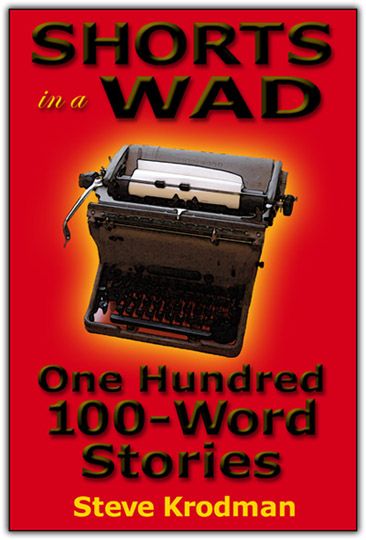I got a Nikon camera
I love to take a photograph
So mama don’t take my Kodachrome away
- Paul Simon, “Kodachrome”
I hate to be the bearer of bad tidings, Paul, but Mama Eastman is, indeed, going to be taking your Kodachrome away.
The Big Yellow Box from Rochester, New York - Eastman Kodak - announced this past Monday that manufacture of the venerable color film will be discontinued after the final batch - now in production - is completed. At current usage rates, that means Kodachrome will belong to the ages well before year-end.
Before the era of digital photography arrived and ate the guts out of the traditional emulsion-based photographic film business, Kodachrome - the oldest and longest-lived line of color reversal film - established the benchmark for high-quality slide photography. Transparencies (a more technical term for slides) have a much higher dynamic range than color prints, and Kodachrome offered, as well, very low grain, high sharpness, and accurate color reproduction. It was favored by professionals, especially those shooting images intended for print.
Unlike other color reversal films like Kodak’s Ektachrome and Fuji’s Velvia, Kodachrome does not contain color couplers in the film itself; they are added during processing. What this means is that processing Kodachrome is a gold-plated bitch, using extremely complex chemistry and a lengthy, multiple-step process well beyond the capabilities of your local photofinisher. Kodak could do it, as well as a handful of independent labs, but not the guy in the back room at the corner drugstore. [For many years, Kodak processing was included in the film’s price, but a 1954 court ruling and the resulting consent decree put an end to that practice. Tie-in sales are prohibited by the Clayton Antitrust Act of 1914.]
The beginning of the end for Kodachrome was in 1990, when Fujifilm (the Big Green Box) introduced Velvia, a transparency film offering better color reproduction, even finer grain, and higher speed. Even better, Velvia could be processed by any modestly-equipped lab using E-6 (Ektachrome) chemistry. Photographers deserted Kodachrome in droves... and then along came the Digital Revolution, slamming an electronic stake through the heart of the traditional film business. Polaroid imploded; Kodak began to delaminate.
With Kodachrome now accounting for only one percent of Kodak’s rapidly declining film sales, the handwriting was on the wall. The 74-year-old film would have to go.
I have hundreds - nay, thousands - of color transparencies tucked away in the bowels of Chez Elisson. A goodly proportion of them were shot on one kind of Kodachrome or another: the fine-grained Kodachrome 25, the crisp, contrasty Kodachrome 64. They represent a vanishing technology, much as the Mistress’s collection of shellac 78 RPM phonograph records represents a technology that has since been displaced by digital audio in all its varied forms.
Kodachrome now joins daguerreotypy, wet-plate negatives, and tintypes in the dusty Land of Obsolescence. I will miss it...
...but whenever I pick up my Nikon camera (I love to take a photograph), I don’t miss it all that much. Digital provides high quality, instant satisfaction, instant results, and low cost per image. I’ll remember Kodachrome with nostalgia, but no longing.
[Tip o’ th’ Elisson fedora to the Other Elisson, who provided the link to the WSJ article.]
Update: Looks like Dax Montana beat me to it. His post is here.
I love to take a photograph
So mama don’t take my Kodachrome away
- Paul Simon, “Kodachrome”
I hate to be the bearer of bad tidings, Paul, but Mama Eastman is, indeed, going to be taking your Kodachrome away.
The Big Yellow Box from Rochester, New York - Eastman Kodak - announced this past Monday that manufacture of the venerable color film will be discontinued after the final batch - now in production - is completed. At current usage rates, that means Kodachrome will belong to the ages well before year-end.
Before the era of digital photography arrived and ate the guts out of the traditional emulsion-based photographic film business, Kodachrome - the oldest and longest-lived line of color reversal film - established the benchmark for high-quality slide photography. Transparencies (a more technical term for slides) have a much higher dynamic range than color prints, and Kodachrome offered, as well, very low grain, high sharpness, and accurate color reproduction. It was favored by professionals, especially those shooting images intended for print.
Unlike other color reversal films like Kodak’s Ektachrome and Fuji’s Velvia, Kodachrome does not contain color couplers in the film itself; they are added during processing. What this means is that processing Kodachrome is a gold-plated bitch, using extremely complex chemistry and a lengthy, multiple-step process well beyond the capabilities of your local photofinisher. Kodak could do it, as well as a handful of independent labs, but not the guy in the back room at the corner drugstore. [For many years, Kodak processing was included in the film’s price, but a 1954 court ruling and the resulting consent decree put an end to that practice. Tie-in sales are prohibited by the Clayton Antitrust Act of 1914.]
The beginning of the end for Kodachrome was in 1990, when Fujifilm (the Big Green Box) introduced Velvia, a transparency film offering better color reproduction, even finer grain, and higher speed. Even better, Velvia could be processed by any modestly-equipped lab using E-6 (Ektachrome) chemistry. Photographers deserted Kodachrome in droves... and then along came the Digital Revolution, slamming an electronic stake through the heart of the traditional film business. Polaroid imploded; Kodak began to delaminate.
With Kodachrome now accounting for only one percent of Kodak’s rapidly declining film sales, the handwriting was on the wall. The 74-year-old film would have to go.
I have hundreds - nay, thousands - of color transparencies tucked away in the bowels of Chez Elisson. A goodly proportion of them were shot on one kind of Kodachrome or another: the fine-grained Kodachrome 25, the crisp, contrasty Kodachrome 64. They represent a vanishing technology, much as the Mistress’s collection of shellac 78 RPM phonograph records represents a technology that has since been displaced by digital audio in all its varied forms.
Kodachrome now joins daguerreotypy, wet-plate negatives, and tintypes in the dusty Land of Obsolescence. I will miss it...
...but whenever I pick up my Nikon camera (I love to take a photograph), I don’t miss it all that much. Digital provides high quality, instant satisfaction, instant results, and low cost per image. I’ll remember Kodachrome with nostalgia, but no longing.
[Tip o’ th’ Elisson fedora to the Other Elisson, who provided the link to the WSJ article.]
Update: Looks like Dax Montana beat me to it. His post is here.




















No comments:
Post a Comment